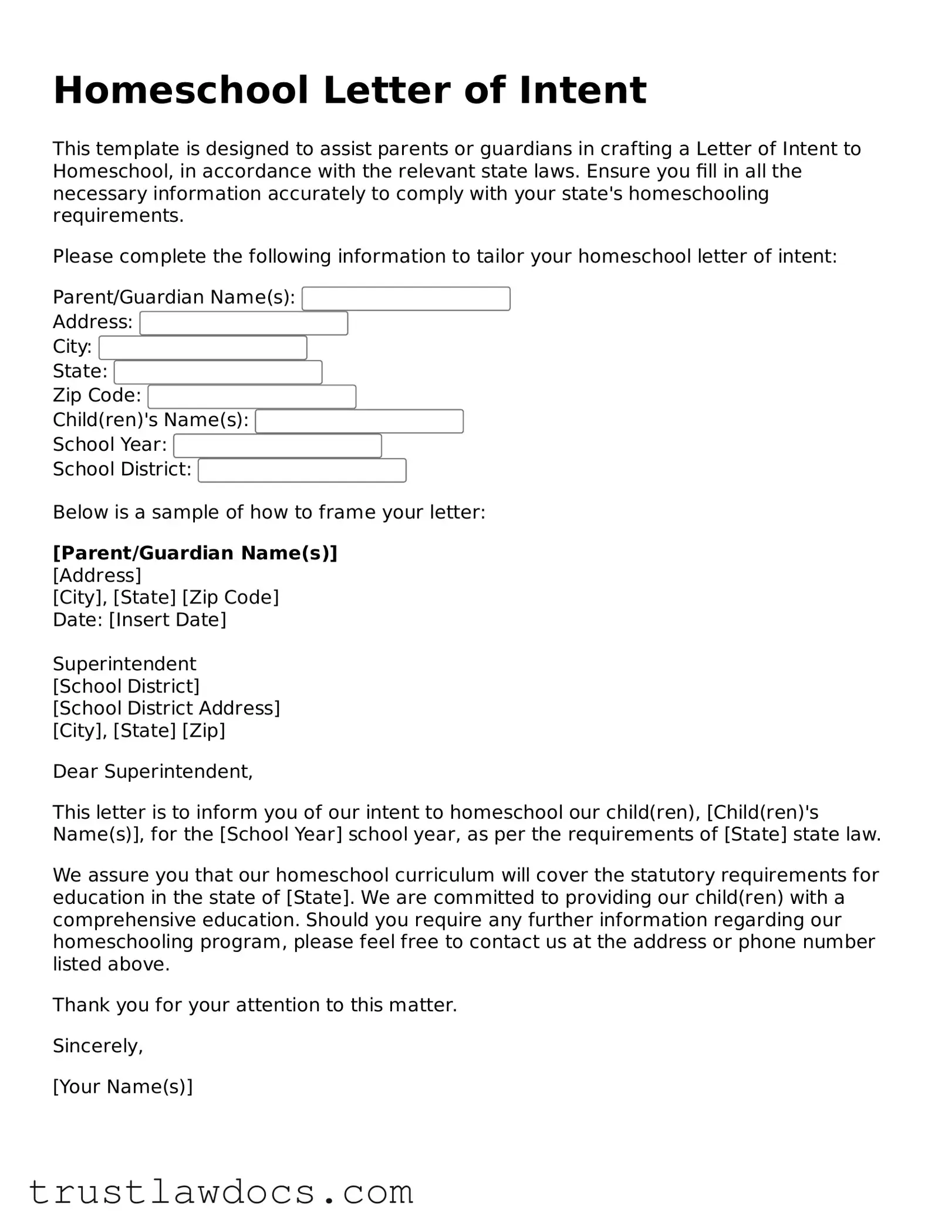What is a Homeschool Letter of Intent?
A Homeschool Letter of Intent is a document that parents or guardians are required to submit to their local school district or state education authority to notify them of their intention to homeschool their child. This letter typically outlines the parent's plan to provide education outside of the traditional public or private school setting.
When should I submit a Homeschool Letter of Intent?
It's important to check the specific requirements of your state or local education authority, as the timeline can vary. Generally, it's recommended to submit the letter at least 14 days before you plan to start homeschooling, or by the date specified by your state's regulations.
Who needs to submit a Homeschool Letter of Intent?
Any parent or guardian who decides to educate their child at home instead of enrolling them in a public or private school should submit a Homeschool Letter of Intent. This applies regardless of the reasons for choosing homeschooling.
What information should be included in a Homeschool Letter of Intent?
The content of the letter can vary by state, but generally, it should include the child's full name, date of birth, address, the grade level the child will be entering, and the parent's or guardian's full name and address. It may also require a simple statement of intent to homeschool.
Do I need to follow a specific format for a Homeschool Letter of Intent?
Some states may provide a form or specific format to use, while others may not. It's beneficial to check with your local education authority for any guidelines or templates available. If no format is provided, a simple, clearly written letter including all required information should suffice.
Can I homeschool my child without submitting a Homeschool Letter of Intent?
Submitting a Homeschool Letter of Intent is a legal requirement in many states for parents or guardians who choose to educate their children at home. Failing to submit this letter can lead to truancy issues and legal consequences. Always verify your state’s requirements to ensure compliance.
Where do I submit the Homeschool Letter of Intent?
Typically, the letter should be submitted to the local school district's superintendent's office or the state's department of education, depending on your state's regulations. It's advisable to check with the relevant authority for the correct submission process and address.
What happens after I submit the Homeschool Letter of Intent?
Once submitted, the local education authority may send a receipt or acknowledgment of the letter. They may also provide information on any additional requirements, such as attendance records, educational progress assessments, or curriculum approval. It’s important to keep a copy of all correspondence for your records.
Can I withdraw my Homeschool Letter of Intent?
Yes, if you decide to enroll your child in public or private school after submitting a Homeschool Letter of Intent, you should notify the local education authority of your change in plans. They can guide you on the process, which may include submitting a formal withdrawal letter or completing other documentation.
